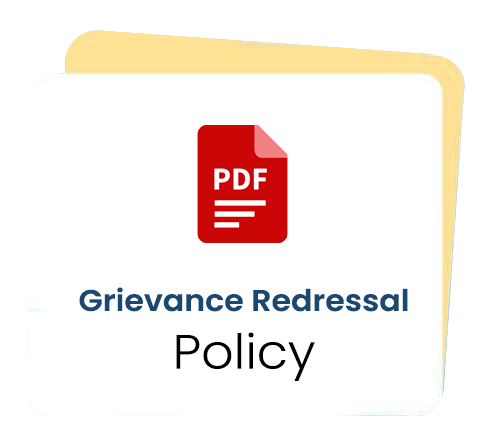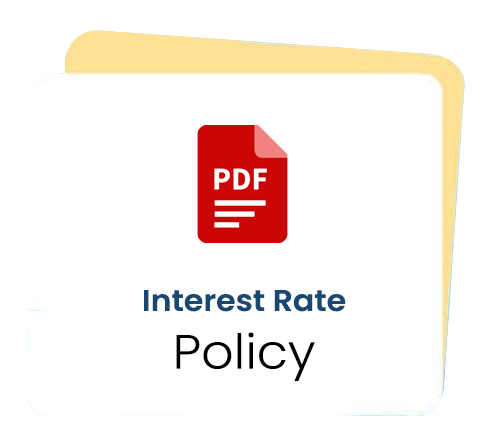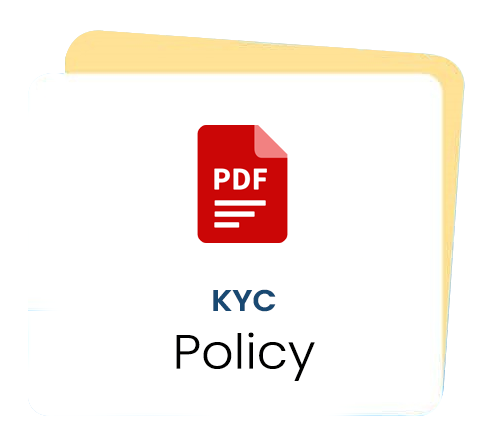Classification as Special Mention Account (SMA) and Non-Performing Asset (NPA)
RBI has issued a circular bearing no. RBI/2021-2022/125 DOR.STR.REC.68/21.04.048/2021-22 on ‘Prudential Norms on Income Recognition, Asset Classification and Provisioning, pertaining to Advances – Clarifications’ dated 12-11-2021 (https://www.rbi.org.in/scripts/NotificationUser.aspx?Id=12194&Mode=0), for ensuring uniformity in the implementation of IRACP norms across all lending institutions, certain aspects of the extant regulatory guidelines are being clarified and/or harmonized, which will be applicable mutatis mutandis to all lending institutions
(a) In pursuance of the above, we intend to bring the following clarifications to the notice of the Borrower as follows:
- Dues: shall mean the principal / interest / any charges levied on the loan account which are payable within the period stipulated as per the terms of sanction of the credit facility.
- Overdue: shall mean the principal / interest / any charges levied on the loan account which are payable, but have not been paid within the period stipulated as per the terms of sanction of the credit facility. In other words, any amount due to the lender under any credit facility is 'overdue' if it is not paid by the due date fixed by the lender.
-
Relevance of the principle of 'First In First Out' (FIFO) in appropriation of payments into the Borrower’s account: The principle of FIFO i.e. 'First In, First Out' accounting method is relevant to arrive at the number of days overdue for determining the SMA/NPA status. The FIFO principle assumes that the oldest outstanding dues in the loan account needs to be cleared first. The FIFO method thus requires that what is due first must be paid by the Borrower first.
For example, if in any loan account as on 01-02-2021, there are no overdues and an amount of INR X is due for payment towards principal instalment / interest / charges, any payment being credited on or after 01-02-2021 in the loan account will be used to pay off the dues outstanding on 01-02-2021.
Assuming that nothing is paid / or there is partial payment (INR Y) of dues during the month of February, the overdue as on 01-03-2021 will be INR X - INR Y. Additionally, an amount of INR Z becomes due as on 01-03-2021. Now any payment partial payment into the account on or after 01-03-2021 will be first utilized to pay off the partial due of 01-02-2021 (INR X - INR Y). If there is more recovery than the INR X - INR Y, then after recovering dues of 01-02-2021, the remaining amount will be appropriated towards full or partial recovery, as the case may be, of dues of 01-03-2021 and so on and so forth.
- Age of oldest dues: The age of oldest dues is reckoned in days from the date on which the oldest payment is due and continues to remain unpaid. In the aforesaid illustration, if the dues relating to 01-02-2021 remain unpaid till 01- 03-2021, the age of the oldest dues is reckoned as 29 days on 02-03-2021.
(b) Classification as Special Mention Account (SMA) and Non-Performing Asset (NPA)
Lending institutions will recognize the incipient stress in loan accounts, immediately on default, by classifying them as Special Mention Accounts (SMA). The basis of classification of SMA / NPA category shall be as follows:
| SMA Sub categories | Basis for classification – Principal or interest payment or any other amount wholly or partly overdu |
|---|---|
| SMA 0 | Up to 30 days |
| SMA 1 | More than 30 days andUp to 60 days |
| SMA 0 | More than 60 days andUp to 90 days |
(c) Non-performing Asset:
Non-Performing Asset (NPA) is a loan or an advance where Interest and/or instalment of principal remains overdue for a period of more than 90 days
Illustrative movement of an account to SMA category to NPA category based on delay / non-payment of dues and subsequent upgradation to Standard category at day end process is provided.
| Due date of Payment | Payment date | Payment Covers | Age of oldest dues in date | SMA/NPA categorisation | SMA since date/SMA class date | NPA categorization | NPA date |
|---|---|---|---|---|---|---|---|
| 01.01.2022 | 01.01.2022 | Entire dues upto 01.01.2022 | 0 | NIL | NA | NA | NA |
| 01.02.2022 | 01.02.2022 | Partly paid dues of 01.02.2022 | 1 | SMA-0 | 01.02.2022 | NA | NA |
| 01.02.2022 | 02.02.2022 | Partly paid dues of 01.02.2022 | 2 | SMA-0 | 01.02.2022 | NA | NA |
| 01.03.2022 | Dues of 01.02.2022 not fully paid 01.03.2022 is also due at EOD 01.03.2022 | 29 | SMA-0 | 01.02.2022 | NA | NA | |
| Dues of 01.02.2022 fully paid, Due for 01.03.2022 is not paid at EOD 01.03.2022 | 1 | SMA-0 | 1.03.2022 | NA | NA | ||
| No payment of full dues of 01.02.2022 and 01.03.2022 at EOD 03.03.2022 | 31 | SMA-1 | 01.02.2022/03.03.2022 | NA | NA | ||
| Dues of 01.02.2022 fully paid, due for 01.03.2022 not fully paid at EOD 01.03.2022 | 1 | SMA-0 | 01.03.2022 | NA | NA | ||
| 01.04.2022 | No payment of dues of 01.02.2022, 01.03.2022 and amount dues on 01.04.2022 at EOD 01.04.2022 | 60 | SMA-1 | 01.02.2022/02.04.2022 | NA | NA | |
| No payment of dues of 01.02.2022 till 01.04.2022 at EOD 02.04.2022 | 61 | SMA-2 | 01.02.2022/02.04.2022 | NA | NA | ||
| 01.05.2022 | No payment of dues of 01.02.2022 till 01.05.2022 at EOD 01.05.2022 | 90 | SMA-2 | 01.02.2022/02.04.2022 | NA | NA | |
| No payment of dues of 01.02.2022 till 01.05.2022 at EOD 02.05.2022 | 91 | NPA | NA | NA | 02.05.2022 | ||
| 01.06.2022 | 01.06.2022 | Fully paid dues of 01.02.2022 at EOD 01.06.2022 | 93 | NPA | NA | NPA | 02.05.2022 |
| 01.07.2022 | 01.07.2022 | Paid entire dues of 01.03.2022 & 01.04.2022 at EOD 01.07.2022 | 62 | NPA | NA | NPA | 02.05.2022 |
| 01.08.2022 | 01.08.2022 | Paid entire dues of 01.05.2022 & 01.06.2022 at EOD 01.08.2022 | 32 | NPA | NA | NPA | 02.05.2022 |
| 01.09.2022 | 01.09.2022 | Paid entire dues of 01.07.2022 & 01.08.2022 at EOD 01.09.2022 | 1 | NPA | NA | NPA | 02.05.2022 |
| 01.10.2022 | 01.10.2022 | Paid entire dues of 01.09.2022 & 01.10.2022 | 0 | Standard Account with No Overdues | NA | NA | STD from 01.10.2022 |
The manner of classification and illustrations of SMA and NPA as provided in sub-clauses (a) to (d) above are only one of the various manners in which the Institution is required to classify accounts as SMA / NPA as per the various applicable regulations and guidelines issued by RBI from time to time and The above asset / SMA classification norms are subject to changes as per regulatory instructions issued from time to time.
Loan accounts classified as NPAs may be upgraded as ‘Standard’ asset only if entire arrears of interest and principal are paid by the Borrower.
(d) Impact Of SMA Classification on CIBIL/ Credit Report
Any default on the loan account as stated above is reported to Credit Information Companies and other regulatory agencies by the lending institutions. The reporting can have adverse effects on the credit rating of the respective customer and also initiate various regulatory actions as per guidelines laid down.
Disclaimer
The note is made to disseminate knowledge and does not provide legal, financial, or commercial advice. IFSPL or its associates cannot be held liable for any action taken based on its contents.





